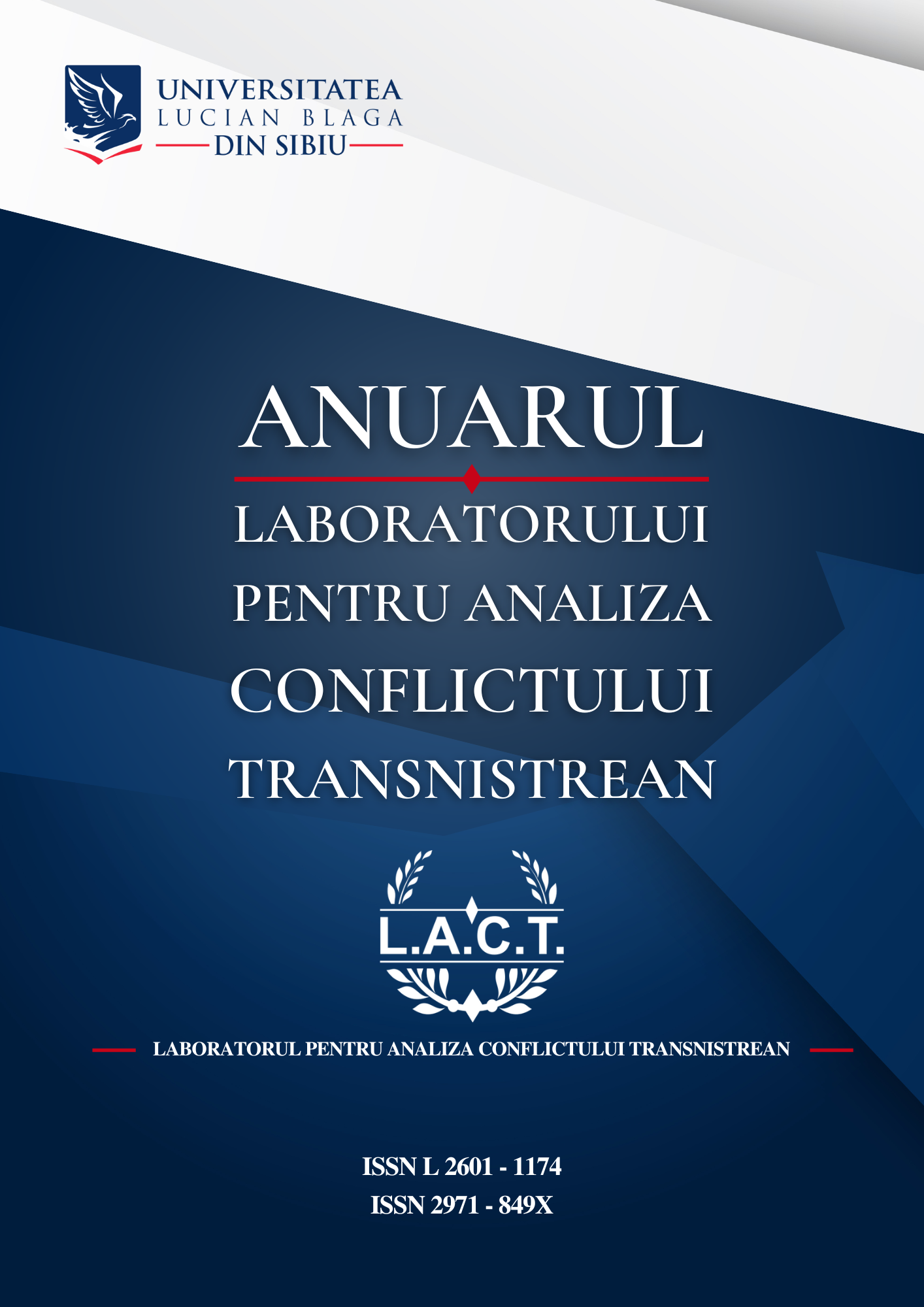THE PARTICULARITIES OF THE PEACEKEEPING MISSION IN THE TRANSNISTRIAN REGION
THE PARTICULARITIES OF THE PEACEKEEPING MISSION IN THE TRANSNISTRIAN REGION
Author(s): Artur SosinSubject(s): Governance, Military history, Government/Political systems, International relations/trade, Security and defense, Military policy, Welfare systems, Present Times (2010 - today), Geopolitics, Peace and Conflict Studies
Published by: Editura Universitatii LUCIAN BLAGA din Sibiu
Keywords: Peacekeeping Mission; Transnistrian Region; 5+2 Format; Settlement Process;
Summary/Abstract: After the collapse of the Soviet Union, the Russian Federation has been trying to maintain the control over the former Soviet republics, by deploying their military forces in most of the regions of the newly established republics. One of the most controversial conflicts is the peacekeeping mission in the Transnistrian region of the Republic of Moldova, so called “frozen conflict”. This conflict has been going for more than thirty years without reaching to a solution. Despite the attempts of the actual format “5+2” and the intervention of the international organizations to improve the status quo of the conflict, not much has been done in this regard. Moreover, the research has shown that in order to solve a conflict, in our case a frozen conflict, you have to bring to the table of discussions all the actors, not only the regional ones, but also the international actors, following the principles of the international law. In the same context, for solving the Transnistrian conflict, the Moldovan part has to assure that at negotiation process is the presence of the Russian Federation, who is the main actor, and the one that is interested the most in this region. In this article, the author is also trying to show that even though the Agreement for Peace was signed in 1992 by President of the Republic of Moldova Mircea Snegur and the President of the Russian Federation Boris Eltin, the official document only played the role just to stop the fire and did not have a major impact on the conflict afterwards. Furthermore, the existing peacekeeping mechanisms in place are not properly working in order to solve the conflict, because they are based only on the decisions of the Joint Control Commission and the Joint Military Command. As long as the format of the peacekeeping mission remains the same, it will not be any advancements of the political settlement in order to solve the conflict.
Journal: Anuarul Laboratorului Pentru Analiza Conflictului Transnistrean
- Issue Year: VI/2022
- Issue No: 1
- Page Range: 85-97
- Page Count: 13
- Language: English

